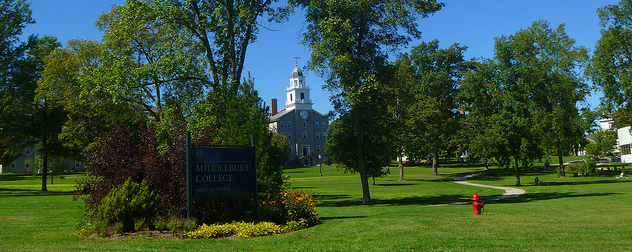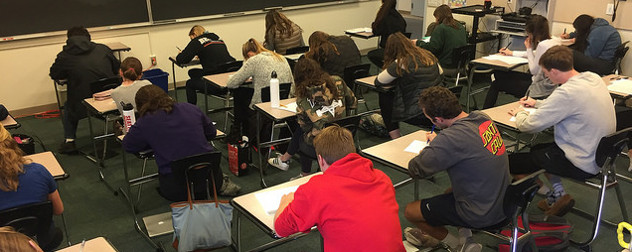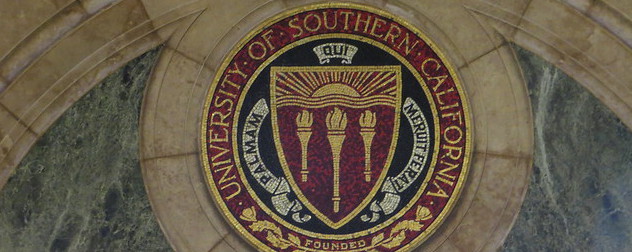
Middlebury College, one of the schools the Justice Department has asked to preserve documents related to early decision admissions. Photo by Flickr user Ins1122.
In the next few weeks, college-bound students across the country will give their final answer to the schools that have extended admission offers. That is, except for those who said yes months ago, effectively forgoing any possible bargaining power.
Early decision, sometimes called early acceptance, is a common policy for many undergraduate programs in the United States. Typically, candidates submit an application by the end of October to receive a decision in December, with the understanding that the candidate will definitely enroll if offered admission. He or she is expected to withdraw any other applications if the school says yes. For those schools using the popular Common Application, this agreement comes in the form of a waiver signed by the student, the student’s parents and the student’s high school counselors. (Early action programs, while similar in some ways, typically do not require a binding commitment to enroll.)
In order to enforce early decision rules, some colleges share the names and high schools of admitted early deciders in order to ensure that other schools are not considering them. But the Justice Department may soon challenge this practice under antitrust rules.
Justice has asked at least seven colleges to preserve communications and documents related to early decision students. Some schools have been frank in admitting they share lists of such students with one another and have also said they are “cooperating fully” with the Justice Department in this matter. This investigation is not to be confused with the one opened in January examining the National Association for College Admission Counseling’s ethics code, which at this point appears to be unrelated, but regardless it seems clear that Justice has the college admissions process squarely in its sights.
Many students who apply early decision do so because the acceptance rate is often markedly higher than the rate for regular applicants, especially at Ivy League and other elite schools. And it is clear the schools benefit from such programs, both in increased ability to predict incoming class sizes and in students’ decreased ability to bargain over the school’s sticker price based on competing offers. But while antitrust concerns for early decision are relatively new, criticism of the process’s fairness is not. Whether the practice goes far enough to actually violate antitrust laws – and I think it might – it certainly does not benefit students and their families.
For many years, schools have held a lopsided share of the power in determining the price of an education. But there is evidence that this is beginning to change. Consider a recent article in The Wall Street Journal that reports more undergraduate programs are offering discounted tuition in the form of merit scholarships – that is, financial aid not based on student need. This trend is now noticeable on public as well as private campuses.
Much like setting a luxury item’s list price high and then offering a discount, merit scholarships are largely a marketing tactic. And while extending merit aid to students a school especially wants to attract is not a new strategy, a report from the National Association of College and University Business Officers found that one in every five dollars of financial aid at private colleges now goes to a student who doesn’t demonstrate financial need. The average discount from the listed tuition price at such institutions was 49.1 percent in the past academic year, compared to 38.6 percent ten years ago, the Journal reported.
I have always counseled people that unless the sticker price of college is not a big obstacle for their family (a condition that applies to fewer and fewer households), it is very important to shop around. Virtually every student is run-of-the-mill to School A but a desired commodity at School B. School A will accept the student if he or she pays full price, or close to it. School B may very well extend a discount. (And this does not even factor in other considerations, such as the potential that School B’s sticker price is already lower, or that it may be cheaper to live there than near School A.) If you get your heart set on School A in advance, you give away all your leverage. Even in the absence of antitrust misconduct, early decision is expressly designed to take away such leverage from prospective students.
You wouldn’t buy a car that way. Choosing a college is like buying a car, or several cars, every year for at least four consecutive years. Thanks to demographics as well as economics, the pricing power has finally shifted away from schools and toward students and their families. Students should make the most of it.














April 20, 2018 - 1:49 am
As a fifteen year veteran college admissions consultant, I couldn’t agree more that early admissions is the “new normal”, and yet is consequential for seniors and their families. For the past several years, our firm’s partners witnessed double digit increases in the number of clients applying early to colleges. Although just 30 days earlier, early admissions deadlines have extraordinary ramifications for seniors, their parents and the American high school.
First, high school seniors compound stress in their quest to find any seeming advantage in the admissions process by applying early. At a time when seniors are contemplating their life’s meaning and purpose in college essays, they are expediting the self-reflection process, possibly short-changing both themselves and admissions staff with less than insightful personal statements. And, in the increasingly inflationary college admissions process, a less distinguishing application can be consequential in ultimately meriting an acceptance. Plus, in applying Early Decision, the senior potentially loses the understanding of their abilities and intellectual interests, which will guide them in their college years, possibly challenging them in their road to success, which they’re ultimately attending college to develop. And, when 58% of students are not finishing a college degree within four years, college costs are rising each year, and according to a recent study by the New York Federal Reserve, a third of recent college graduates are underemployed, the risks of not focusing efforts during college, based on a confident understanding of oneself and one’s goals, is more than costly.
For parents, imbued with the responsibility of safeguarding their children’s futures, early admissions seems like a prudent risk. However, they unwittingly subject their children to the “arms race of admissions,” becoming the worst examples of drone parents who had the best of intentions.
Lastly, for the American high school, early admissions is effectively rendering the senior year of high school impotent. With current senior year academic performance or the maturity of leadership outside the classroom left out of the application process, admissions officers are forced to decide future promise on incomplete resumes and transcripts from only three high school years. Furthermore, seniors, sensing the irrelevance of their last high school year, have little incentive to engage the learning process beyond the minimum required to maintain their acceptances. Thus, they naively compromise an entire year of learning, right at the first critical juncture of their young lives, maturing into adulthood.
I appreciate your views on the need for “comparison-shopping” in college admissions, for young people to make the most effective and valuable choice for their future.
Jill Yoshikawa, EdM
April 21, 2018 - 8:48 am
Finding the right fit is the critical issue in lowering the cost of college. Transferring can add another semester or year to a student’s education. Fit includes the right academic, social and economic environment for students and their families. Early decision is a viable option, especially when some of the colleges are accepting 50% of their freshman class. For some schools that means the student has a 200-300% chance of acceptance. We can help families understand if they are leaving money on the table for merit money or if the added cost is of value to the family. Some colleges do not offer merit aid and some offer it only to the top 3% of the incoming class. Most of the merit money goes to to students that the college finds highly desirable. These schools are likely to be safety schools. There is nothing wrong with attending a safety school. It may offer a better education than that reach school. Malcolm Gladwell the renowned author makes a good argument not to attend reach schools. https://www.youtube.com/watch?v=dzWwZ9C5gzE